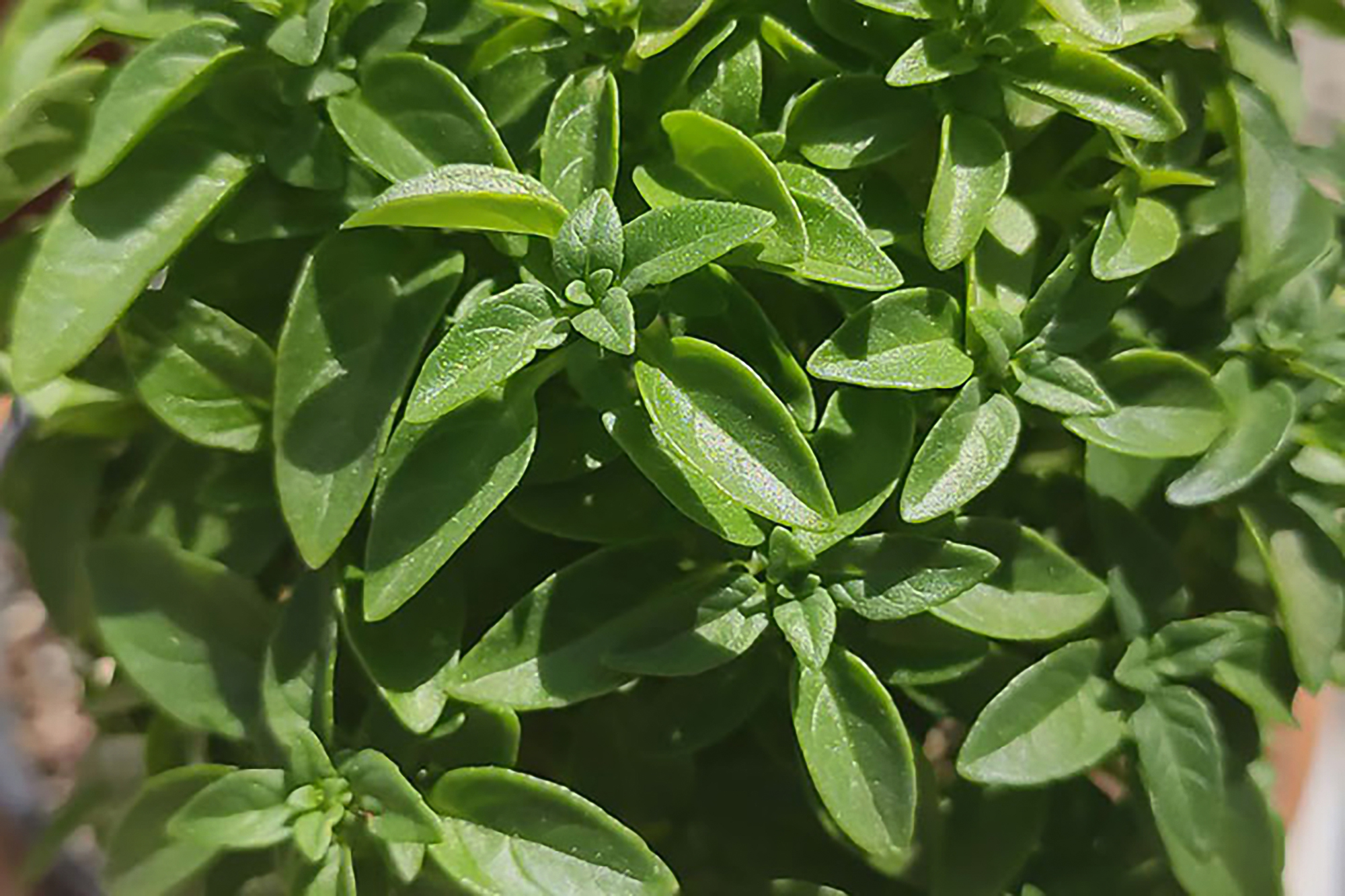Ocimum basilicum

Great basil, Ώκιμον. Ocimum basilicum is an erect, almost glabrous herb, which grows to between 30 and 90 cm high. The leaves are ovate, lanceolate, cucuminate, toothed or entire, glabrous on both surfaces and glandular. When mature, they reach approximately 5 cm in length, excluding the petiole, which is approximately 2 cm long. The upper surface is smooth and lustrous; on the lower surface along the midrib and on the petiole short, stiff hairs occur sparingly.
The flowers are white or pale purple and are borne in long terminal racemose inflorescences, in simple or many branched racemes. The greenish corolla is small and inconspicuous. The calyx is partly grown together with the branches, and enlarges itself after flowering, remaining dry on the plant with the branches. The capitate hairs have commonly a two-celled head with a stalk so short as to appear sessile. Polymorphism and cross-pollination under cultivation have given rise to a number of sub-species and varieties differing in height, habitat and growth, degree of hairiness and colour of stems and in their leaves and flowers.
Uses
Basil is most commonly used fresh in recipes. In general, it is added at the last moment, as cooking quickly destroys the flavor. The fresh herb can be kept for a short time in plastic bags in the refrigerator, or for a longer period in the freezer, after being blanched quickly in boiling water. The dried herb also loses most of its flavor, and what little flavor remains tastes very different, with a weak coumarin flavor, like hay.
The seeds of several basil varieties become gelatinous, and are used in Asian drinks and desserts such as faluda, sharbat-e-rihan, or hột é. In folk medicine practices, such as those of Ayurveda or traditional Chinese medicine, basil is thought to have therapeutic properties. Research studies of the essential oil showed antifungal and insect-repelling properties, including potential toxicity to mosquitos.
Growing Basil
Basil, Ocimum basilicum, is a popular, half-hardy to tender herb that may be grown with tomatoes, used as a companion plant to deter whitefly.
Native to dry scrub in Africa and Asia, basil requires a lot of heat to thrive, and can be prone to downy mildew. There are many varieties to choose from, however, some of which have been bred to withstand cooler conditions. Sow Ocimum basilicum seed indoors in a greenhouse or on a warm windowsill, and move plants outside in summer. Water plants sparingly, ideally before noon so the roots have time to dry out before temperatures decrease in the evening. Harvest leaves regularly and remove flowers to concentrate the plant’s energy on leaf production.
Classification
| Kingdom | Plantae |
| Phylum | Tracheophyta |
| Class | Magnoliopsida |
| Order | Lamiales |
| Family | Lamiaceae |
| Genus | Ocimum |
| Species | Ocimum basilicum |






